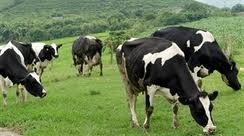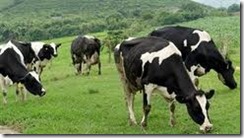Foreign businesses hold most of the animal feed and livestock breeding market share and are working together to increase prices, according to local industry advocates.
“While local firms are suffering losses, and narrowing production, foreign ones are growing in Vietnam, dominating the market, making corrupt use of policy gaps, and increasing prices unreasonably to earn huge profits,” said Le Ba Lich, chairman of the Vietnam Animal Feed Association.
Despite numbering only 57, foreign livestock firms are holding over 70 percent share of the country’s animal feed market and 50 percent of the breeder market, while 176 local companies compete for the rest.
Many foreign animal feed manufacturers have gained big profits in Vietnam.
Among the 500 biggest firms in Vietnam in 2010, foreign livestock producer CP Vietnam ranked 23rd with a revenue of US$1.1 billion, Lich said. CP was only behind major state-owned groups, according to Lich.
After 18 years of operating in Vietnam, the firm now holds 50 percent of the chicken egg market, 40 percent of the chicken meat, and a 20 percent share of the animal feed market. It has cooperated with over 3,000 farmer households to implement livestock breeding projects, and has established thousands of sales agents nationwide, he said.
Seeing big business opportunities, many foreign livestock manufacturers are looking to enter the market, Lich said.
On September 19, Hope Group, a Chinese company, inaugurated an animal feed production plant with an annual capacity of 400,000 tons in Bac Giang Province.
Lich said gaps in state policies and the weaknesses of local firms have made it easy for foreign livestock manufacturers to come and dominate the local market.
“Domestic businesses with thin capital cannot compete with foreign rivals, especially in the context of high interest rates. Now, most local firms need to borrow up to 70 percent of their capital demand, while foreign ones need only 30 percent,” Lich said.
“With abundant capital, foreign firms can stockpile raw materials when prices are low, but local companies cannot,” he said.
Nguyen Xuan Duong, deputy director of the Animal Husbandry Department at the Ministry of Agriculture and Rural Development, said most foreign livestock manufacturers come from countries with developed agricultural processing industries such as the US, France, Denmark and Thailand, so they have more experience, bigger capital sources, better management, and more advanced technology in the field. “Thus, they can grow big, and dominate the market.”
Moreover, while domestic businesses are only allowed to borrow in local currency and at high lending rates, their foreign rivals can borrow at low interest rates, Duong said. Lending interest rates on dong loans are some 19 percent a year, while it is only 5 percent for foreign currency loans.
Vietnam spends around $3 billion to import materials for animal feed production each year. The dependence on imported materials benefits foreign firms as they can import more easily via their parent companies, Duong said.
Huge profits
Dominating the market, foreign firms freely collude with each other to increase their prices, causing big difficulties to farmers, said Lich.
According to the Animal Husbandry Department, foreign firms raised their prices dozens of times this year, causing prices to rise up to 40 percent over the past year.
Lich said foreign livestock manufacturers like CP, Japfa and Emivest sell a day-old breeder chick to Vietnamese livestock farmers for 26,000-28,000 dong ($1.2-1.3), while production cost for such a chick is only 8,000-9,000 dong.
“Foreign firms can set the prices, and other firms have to follow,” said Lich. “Livestock farmers suffer the biggest losses.”
He said government agencies need to monitor prices more effectively and apply necessary technical barriers to prevent massive imports of breeder animals by foreign companies.
Nguyen Thi Thanh, owner of a livestock farm in Hanoi, said the government should support local farmers and animal feed producers with help on the high interest rates, so that the local husbandry industry can develop.
With current interest rates of some 20 percent each year, earnings from the business are not enough to pay off the loans, let alone make profit, Thanh said.
An industry insider said the government should also take measures to limit the export of corn and cassava to use for local animal feed production instead.
Duong said small local companies should merge to create bigger ones so that they can compete more easily. He said they should establish a closed production chain, from producing animal feed to raising breeder animals and processing food. This is the animal feed manufacturer trend internationally, he said.
Vietnam’s animal feed output has increased 15-18 percent annually in recent years, from only 400,000 tons in 1993 to 14 million tons now, he added.
http://vietnambusiness.asia/foreign-firms-corner-vietnam%E2%80%99s-husbandry-industry/


Deprecated: strpos(): Passing null to parameter #1 ($haystack) of type string is deprecated in /home/agriviek8Qv/agriviet.net/public_html/wp-includes/comment-template.php on line 2522